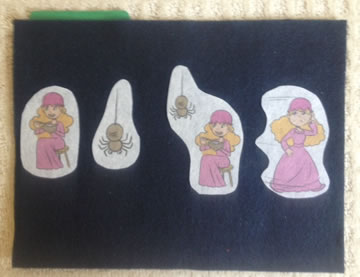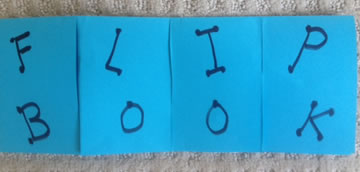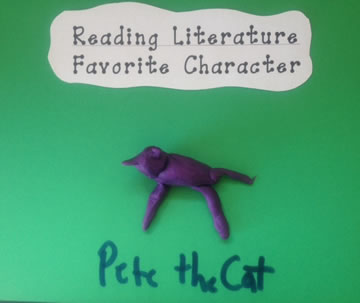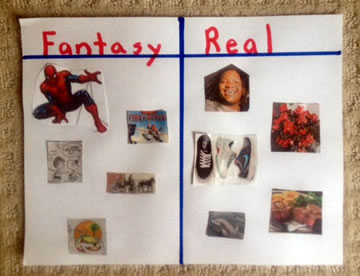I can retell a story
RL.K.2 I can retell a story.
Story Telling Center
Puppets are a unique way to integrate art with standards. Children can make stick puppets, lunch sack puppets, paper plate puppets, envelope puppets, etc. of favorite characters from books read. Their “puppet” can then retell the story.
to integrate art with standards. Children can make stick puppets, lunch sack puppets, paper plate puppets, envelope puppets, etc. of favorite characters from books read. Their “puppet” can then retell the story.
Flannel Board
To make a simple flannel board,  staple the sides of a file folder and glue felt to the front. Make characters from felt or copy color photos from the book, cut them out, and attach a piece of Velcro to the back. Model how to retell the story and then invite the children to retell it using the felt pieces.
staple the sides of a file folder and glue felt to the front. Make characters from felt or copy color photos from the book, cut them out, and attach a piece of Velcro to the back. Model how to retell the story and then invite the children to retell it using the felt pieces.
*Milk filter paper is perfect for flannel board characters. Cut milk filters to 8 ½” x 11” and place in the copy machine. Choose an appropriate page from a book and make a color copy. Cut out and you’ll have realistic pieces to retell a story.
Story Bracelet
Choose color-coded pony beads to represent the characters in a story. Thread on a pipe cleaner and twist the ends to make a bracelet. Children can use the beads as a prompt to tell the story.
For example, in “The Little Red Hen” you could use a red bead for the hen, several yellow beads for the chicks, a black bead for the dog, a pink bead for the pig, an orange bead for the duck, a green bead for plants, a white bead for flour, and a brown bead for bread.
*Let children make their own story bracelets to take home and retell the story.
RL.K.3 I can tell you about characters, setting, and what happened in a story.
Flip Books
Fold a sheet of paper in half lengthwise. Fold into fourths and then eighths. Open and cut  half way down on the three creased lines as shown. Fold in half so children can lift and draw - first, next, then, last.
half way down on the three creased lines as shown. Fold in half so children can lift and draw - first, next, then, last.
*Label the front of the flips “Characters,” “Setting,” “Problem,” “Solution.” Children lift and write or illustrate.
Story House
Fold a piece of paper in half lengthwise. Open. Fold the top two corners down to the crease. Fold the bottom up so it looks like a house. Children can draw the characters on the front of the house and then open to draw the setting.
*Write the author and illustrator on the top flaps and the title on the front. Open and ask children to draw their favorite part of the story.
Story Glove
On the fingers of a glove write “Who?” “What?” “Where?” “When?” “Why?” Children wear the glove as they recall the different story elements. You could also write “Somebody,” “Wanted,” “But,” “So,” “Then” on the fingers.
*This would be fun to do with a friend.
Play Dough Characters
Give children play dough and let them make their favorite character. 
*Let them draw the setting on a sheet of paper and then use the play dough character to talk about the story.
Story Map
You can download many different story maps on the internet that will give children a visual way to recall details in a story.
RL.K.5 I can recognize different types of texts (stories, poems, fantasy, and real).
Bookstore
Select several different types  of books (ABC, fiction, fairy tale, poetry, nursery rhyme, cookbook, magazine, etc.) and place them in a cloth shopping bag. Explain that you went to a bookstore and you need help labeling the books. On the front of index cards write: poem, nursery rhyme, fantasy, real, alphabet, etc. Children take the cards and match them up with the appropriate book. Encourage them to explain to a friend how they made their selections.
of books (ABC, fiction, fairy tale, poetry, nursery rhyme, cookbook, magazine, etc.) and place them in a cloth shopping bag. Explain that you went to a bookstore and you need help labeling the books. On the front of index cards write: poem, nursery rhyme, fantasy, real, alphabet, etc. Children take the cards and match them up with the appropriate book. Encourage them to explain to a friend how they made their selections.
 to integrate art with standards. Children can make stick puppets, lunch sack puppets, paper plate puppets, envelope puppets, etc. of favorite characters from books read. Their “puppet” can then retell the story.
to integrate art with standards. Children can make stick puppets, lunch sack puppets, paper plate puppets, envelope puppets, etc. of favorite characters from books read. Their “puppet” can then retell the story. staple the sides of a file folder and glue felt to the front. Make characters from felt or copy color photos from the book, cut them out, and attach a piece of Velcro to the back. Model how to retell the story and then invite the children to retell it using the felt pieces.
staple the sides of a file folder and glue felt to the front. Make characters from felt or copy color photos from the book, cut them out, and attach a piece of Velcro to the back. Model how to retell the story and then invite the children to retell it using the felt pieces. half way down on the three creased lines as shown. Fold in half so children can lift and draw - first, next, then, last.
half way down on the three creased lines as shown. Fold in half so children can lift and draw - first, next, then, last. 
 of books (ABC, fiction, fairy tale, poetry, nursery rhyme, cookbook, magazine, etc.) and place them in a cloth shopping bag. Explain that you went to a bookstore and you need help labeling the books. On the front of index cards write: poem, nursery rhyme, fantasy, real, alphabet, etc. Children take the cards and match them up with the appropriate book. Encourage them to explain to a friend how they made their selections.
of books (ABC, fiction, fairy tale, poetry, nursery rhyme, cookbook, magazine, etc.) and place them in a cloth shopping bag. Explain that you went to a bookstore and you need help labeling the books. On the front of index cards write: poem, nursery rhyme, fantasy, real, alphabet, etc. Children take the cards and match them up with the appropriate book. Encourage them to explain to a friend how they made their selections.  in half and draw a line down the middle crease to make a T-chart. Write “Fantasy” on one side and “Real” on the other side. Have children cut out pictures of things that are pretend/fantasy and glue on one side. Ask them to cut out pictures of things that are real and glue them to the other side. Can they explain the difference?
in half and draw a line down the middle crease to make a T-chart. Write “Fantasy” on one side and “Real” on the other side. Have children cut out pictures of things that are pretend/fantasy and glue on one side. Ask them to cut out pictures of things that are real and glue them to the other side. Can they explain the difference?

